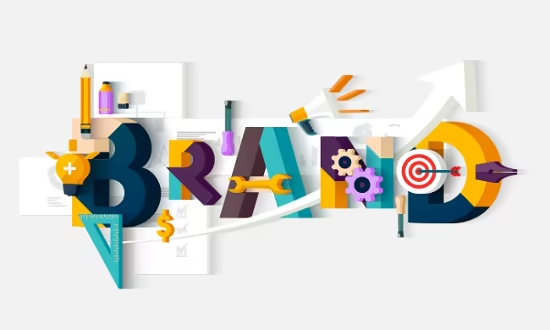Creating an inclusive business is no longer optional for organisations looking to build lasting trust with their audiences. As customer expectations shift, companies are under growing pressure to show a tangible commitment to accessibility, beyond statements or diversity metrics.
Practical inclusion strategies, particularly around transport, are becoming essential to building a brand that feels credible and empathetic. But for businesses hoping to lead in this area, inclusion must translate into action that genuinely supports those with mobility needs.
Prioritising Transport Accessibility in Brand Strategy
Transport is a vital part of everyday independence for wheelchair users, yet it remains one of the most neglected areas in inclusion efforts. While digital accessibility and office adjustments have gained traction, transportation for employees, clients, and stakeholders with limited mobility is often overlooked. This shortfall creates a serious challenge for businesses trying to present themselves as inclusive and accessible.
There is now a clear opportunity for brands to act. Introducing wheelchair-accessible vehicles into company operations shows consideration for the diverse needs of staff and customers. These vehicles allow for smoother, more dignified experiences for wheelchair users, enhancing autonomy and inclusion in a way that digital solutions alone cannot achieve. Providers of specialist WAVs for private and professional use offer reliable solutions that businesses can integrate into transport policies, improving access to offices, events, and service locations.
Wheelchair Accessible Vehicles and Business Impact
Inclusion through transport is about offering equal opportunity. Wheelchair accessible vehicles allow individuals to attend meetings, reach services, and participate in community or professional events. When companies recognise this and invest accordingly, they reflect a brand culture prioritising respect and fairness.
These vehicles are often fitted with ramps, lowered floors, lifts, and secure restraint systems, enabling safe travel for users. Businesses looking for wheelchair-accessible cars for sale should consider practical criteria such as interior space, entry configuration, and the number of passengers supported. These steps reflect a commitment to inclusion beyond statements and manifest in everyday practice.
Strengthening Brand Trust Through Tangible Measures
Genuine inclusion affects how people perceive your brand. When accessibility improvements become part of operations, they show audiences that inclusion is more than a slogan. Wheelchair-accessible vehicles send a clear message; they prove the organisation takes practical steps to remove barriers.
Internal benefits are equally significant. Employees with mobility needs are more likely to feel supported and valued when they can confidently travel. Similarly, clients and customers benefit from more equitable treatment. Making these practical updates can strengthen brand reputation internally and externally, as people recognise the company’s efforts to foster fair and accessible environments.
Moving Beyond Token Inclusion
The biggest challenge in accessible marketing lies in avoiding superficial gestures. Using inclusive imagery without meaningful change can do more harm than good. Audiences are quick to detect when inclusion feels performative. That’s why companies need to demonstrate, not just declare, their commitments.
When sharing stories about wheelchair-accessible vehicles or transport changes, organisations should highlight functionality and integration into daily operations. Focusing on real-world usage avoids portraying accessibility as something extraordinary. Instead, it becomes part of everyday life, exactly as it should be.
Brands that represent disabled individuals respectfully, without falling into stereotypes or overly emotive language, are more likely to gain trust. Describing someone as a “wheelchair user” is a more accurate and respectful term than “wheelchair-bound,” for example. These small choices shape how inclusion is received and understood.
Reviewing Your Organisation’s Transport Strategy
A good starting point is reviewing existing policies and identifying areas where accessibility might be improved. Consider whether company vehicles, events, and site visits are feasible for wheelchair users. Are transport options inclusive? Can team members with mobility requirements travel just as easily as their peers?
This assessment includes looking for wheelchair-accessible vehicles for sale that match specific needs. Vehicle layout, ease of entry, and in-vehicle comfort all matter. Larger organisations may wish to create internal guidelines to help teams choose suitable transport solutions for different events and roles.
Offering flexibility through transport reimbursement or coordinating accessible taxis may also support inclusion in settings where full vehicle integration isn’t feasible. This hybrid approach can act as a short-term step towards broader accessibility.
Bringing Inclusion Into Daily Communication
Once transport options have been updated, ensuring this is reflected in communications is important. Internal teams should be briefed on what accessible vehicles are available and how to book them. External messaging can also highlight inclusion in a way that invites trust rather than demands attention.
The most effective messages show inclusion in action. Rather than announcing new vehicles with dramatic campaigns, share how those vehicles improve daily experience for employees or clients. This could be as simple as including a note in customer emails or on service pages about accessible transport options.
Team members should be trained to speak about inclusion accurately and respectfully. Consistent use of inclusive language creates a coherent message easier for the public to trust and relate to.
From Policy to Daily Practice
Introducing wheelchair accessible vehicles into your organisation should be planned carefully. This isn’t a one-time purchase; it’s an ongoing commitment to accessibility that spans procurement, training, usage, and communication. Companies should allocate time for needs assessment, research, staff education, and feedback collection.
Organisations that view accessibility as part of broader operational improvement are more likely to make meaningful progress. Inclusion is about acknowledging diverse needs and meeting them through thoughtful, practical solutions.
Building a More Inclusive Brand Future
Inclusive transport options form a critical part of building brand trust today. When businesses align their words with actions, they move from saying they value accessibility to showing it. Wheelchair accessible vehicles offer a concrete step forward in creating equitable environments that benefit everyone, not just those with mobility requirements.
Brands that invest in inclusion strengthen loyalty, reinforce credibility, and set themselves apart in competitive markets. As transport plays a bigger role in how people interact with businesses, ensuring access should no longer be treated as an afterthought. Making space for everyone is not only the right thing to do, but also a strategic move that builds a better, more trusted brand.



